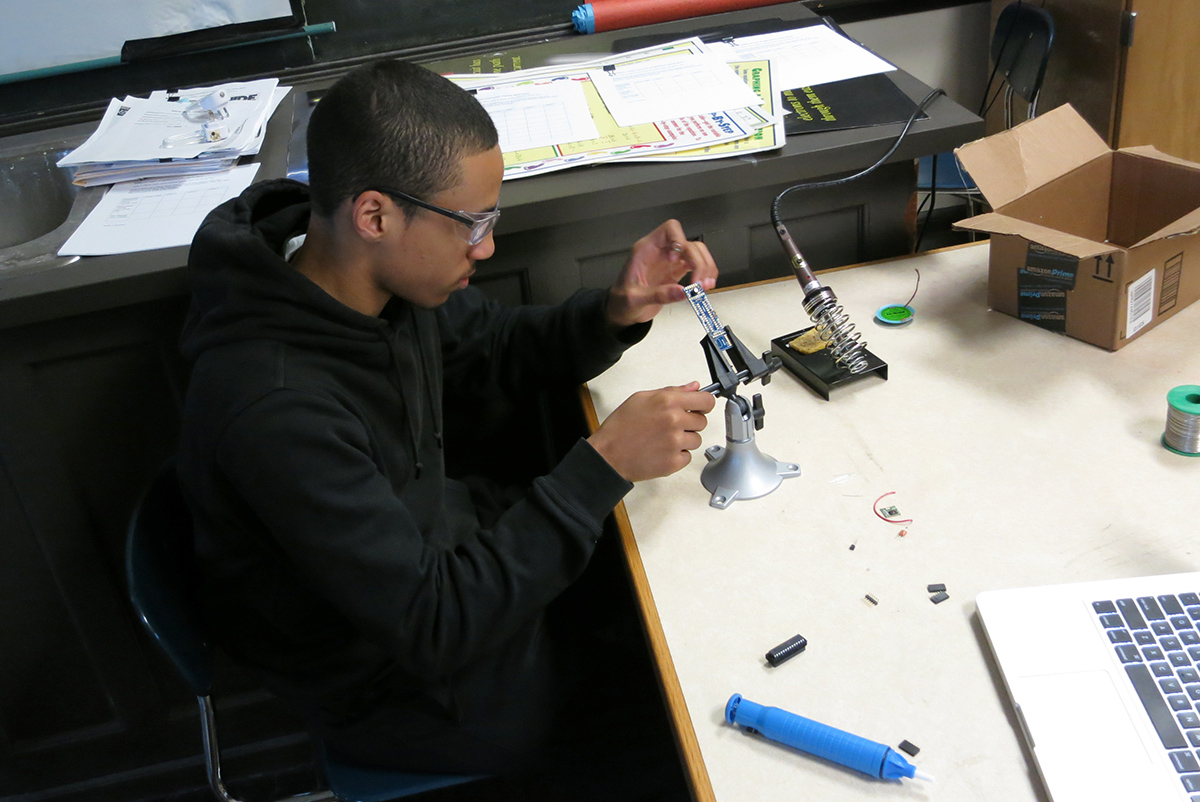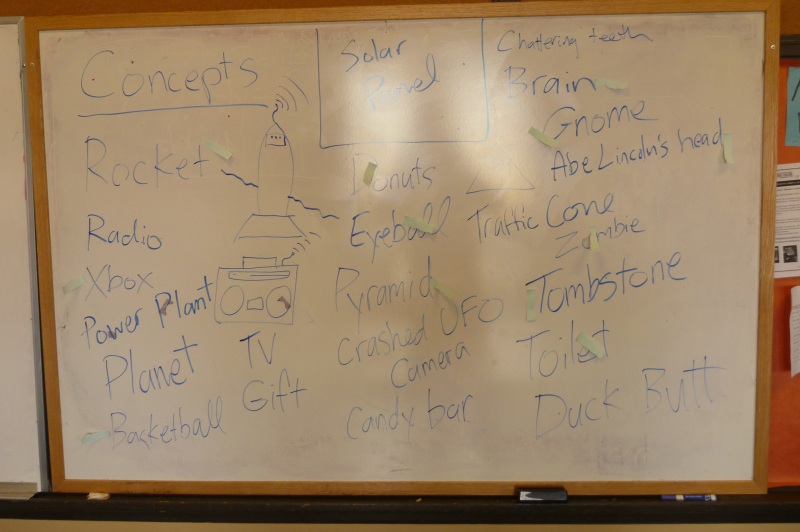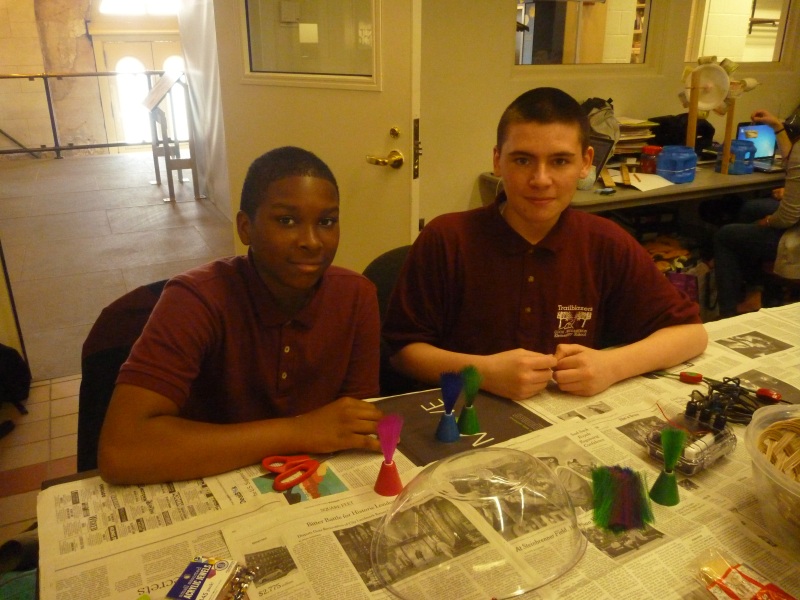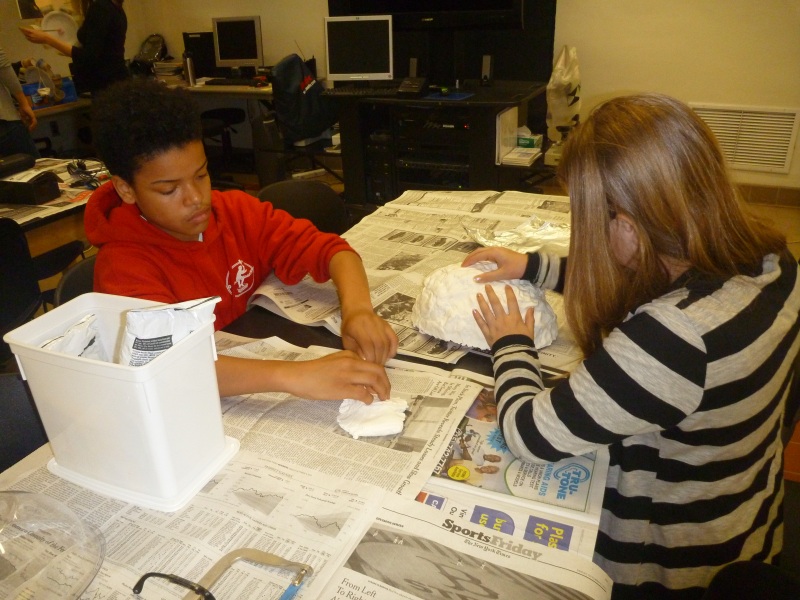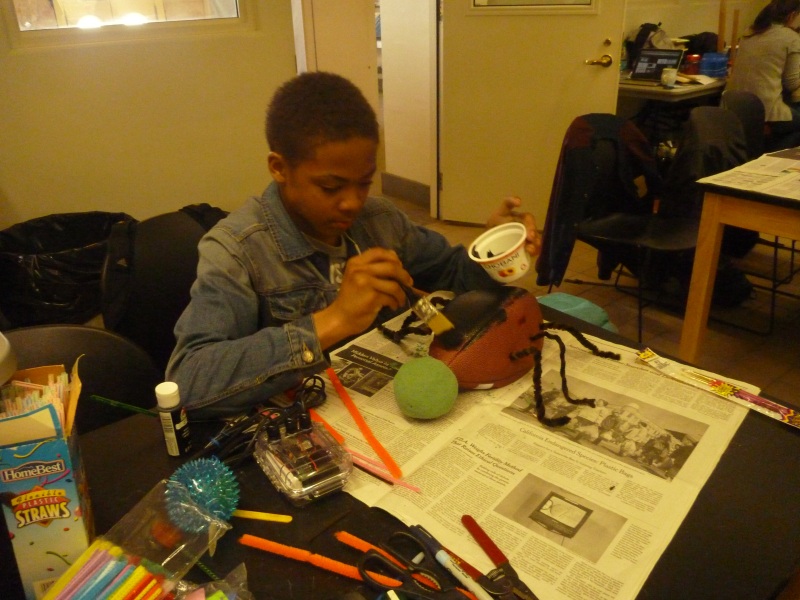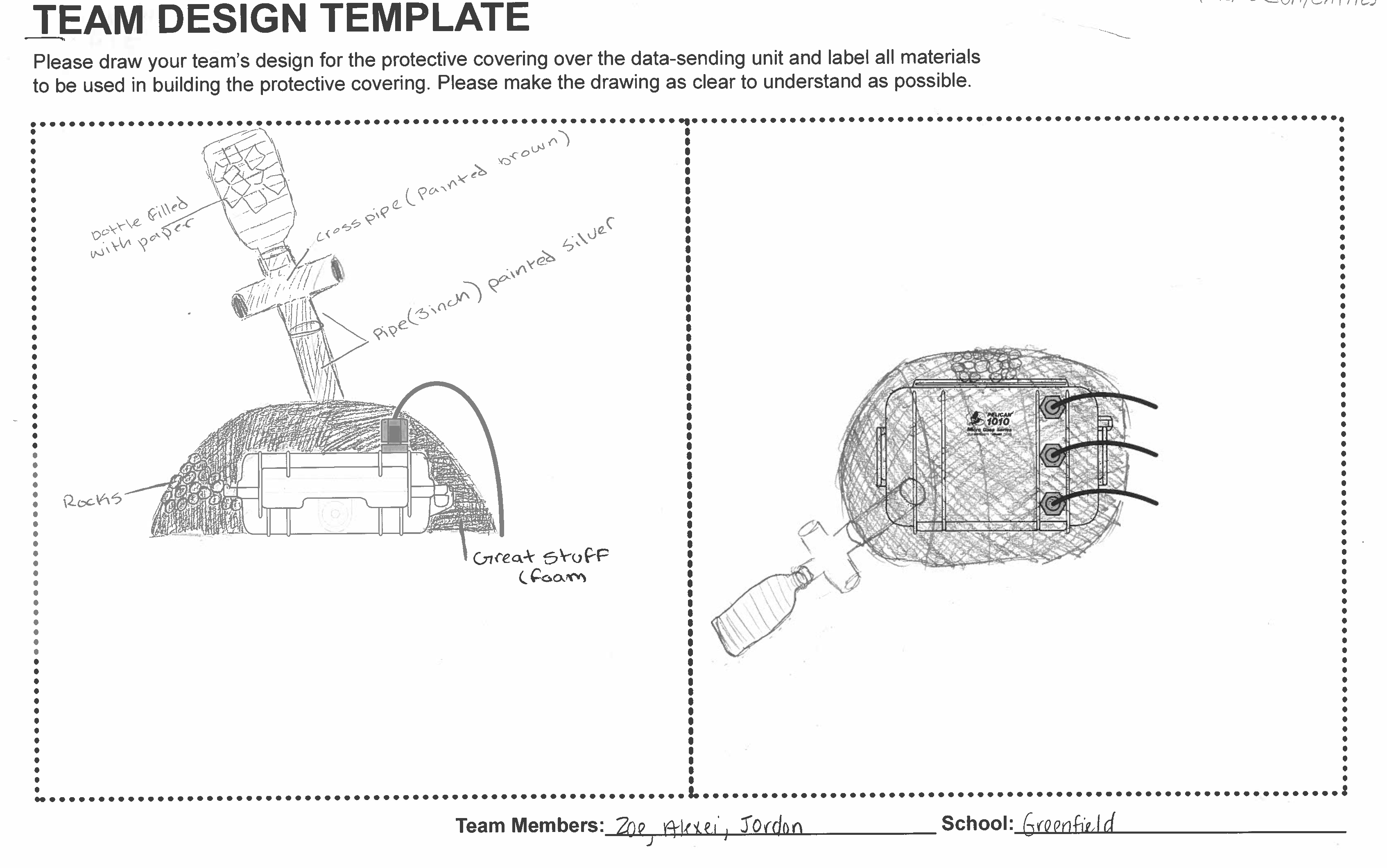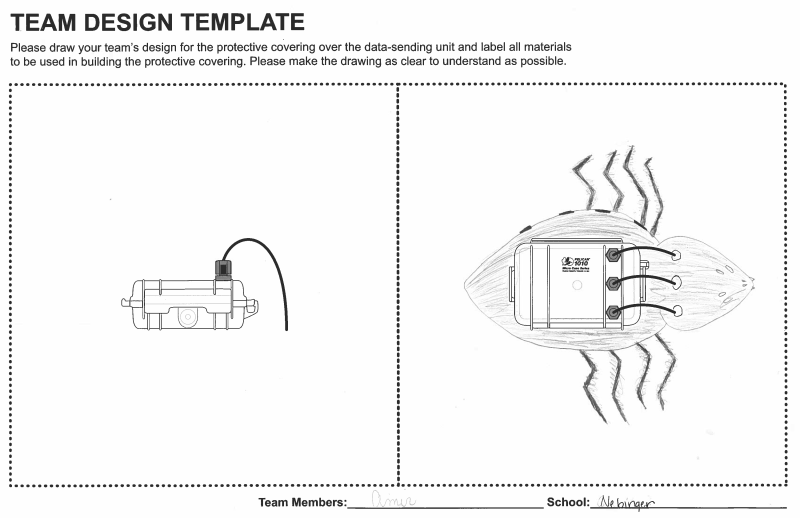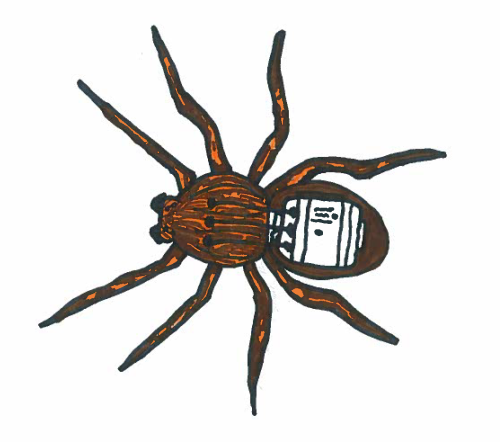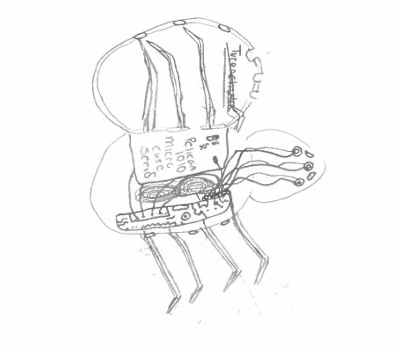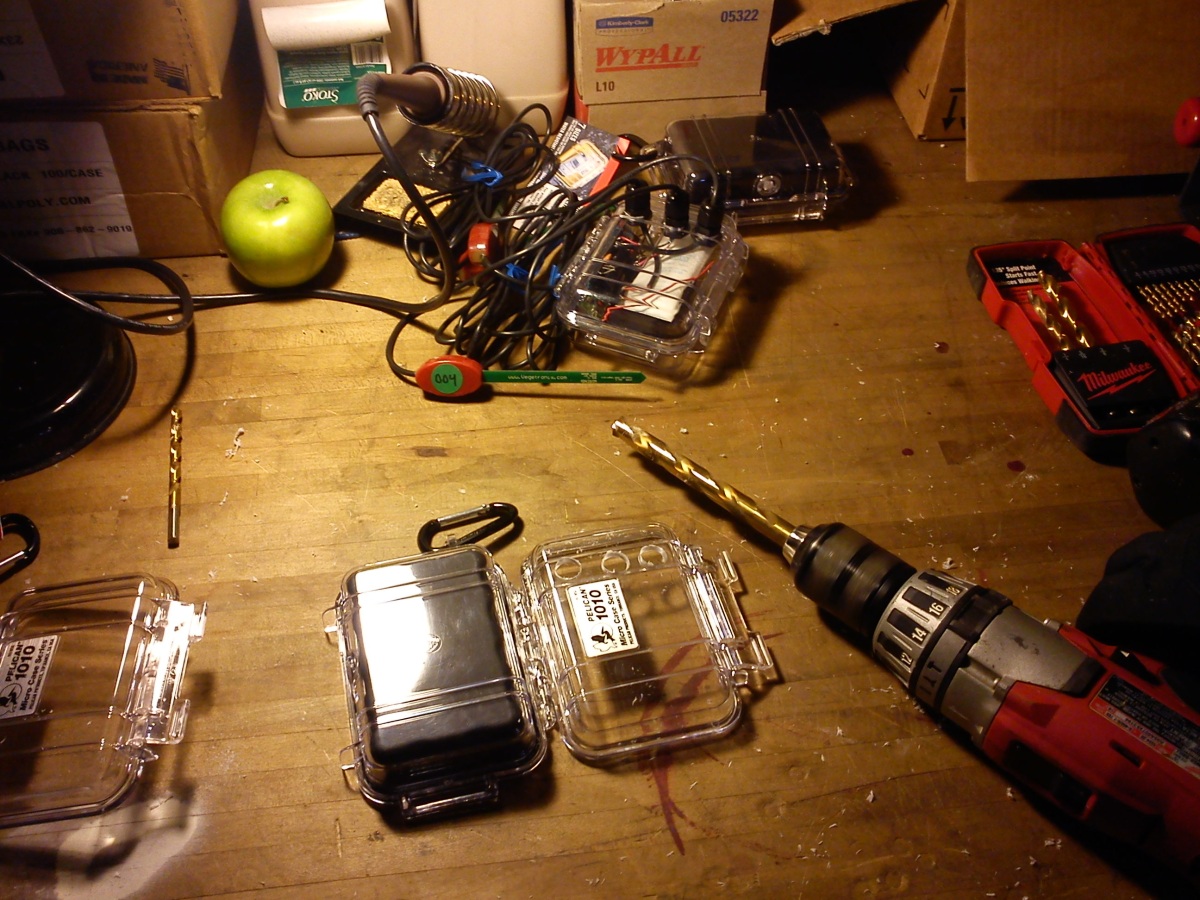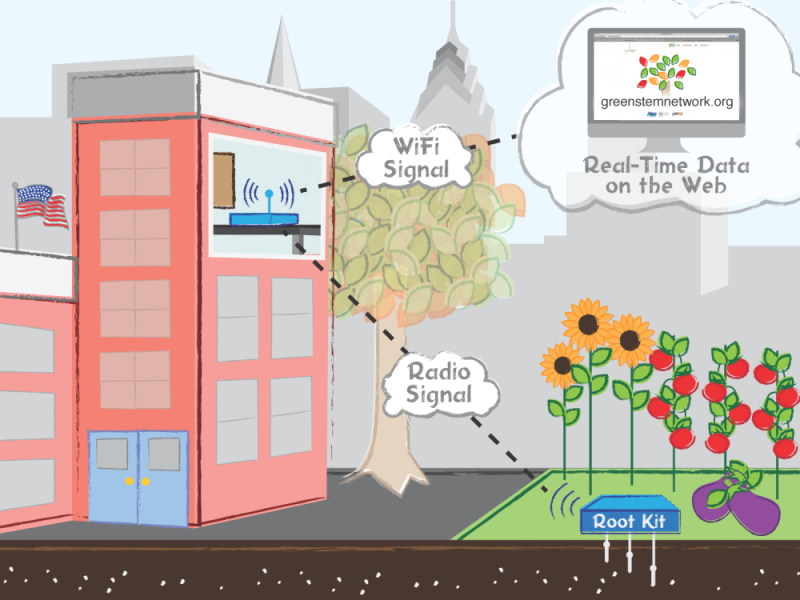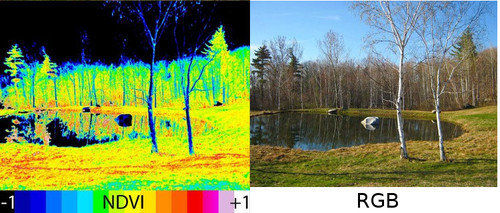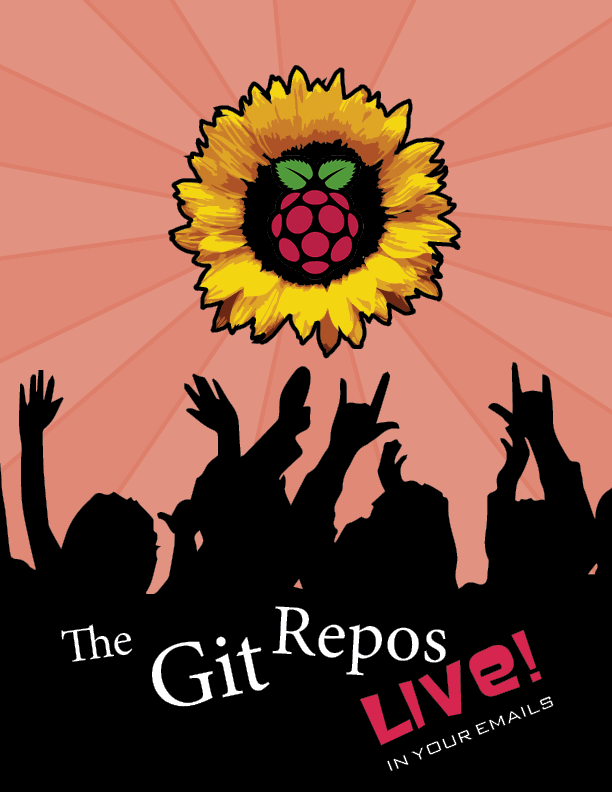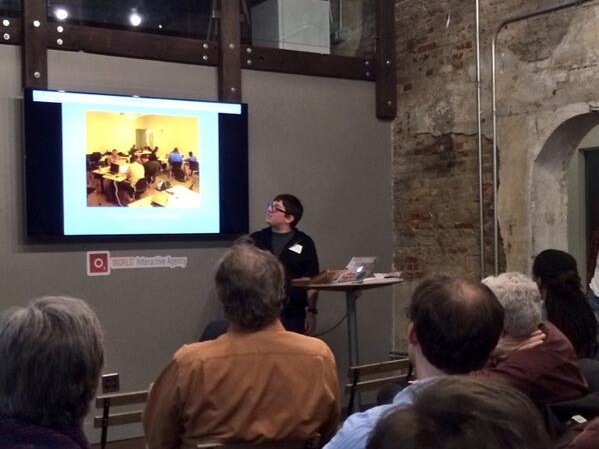Eyeballs and Circuits
Week 2 at Science Leadership Academy’s Beeber campus saw the students begin constructing two aspects of the Root Kit: the circuit board (a JeeNode, which is a low-cost, low-power microcontroller with a radio transceiver) that controls the sensors, and the artistic housing that will cover the Root Kit outside in the garden. One group of students soldered while the other group painted.
We followed JeeLabs’ excellent step-by-step instructions to solder the microcontroller boards. The students are charged with creating their own do-it-yourself manual for creating Root Kits, and their main tips for soldering were 1) Keep track of how long the solder wire is—too long and you don’t have much control, too short and you increase the risk of burning yourself; and 2) Soldering gets easier as you go along. Definitely good advice.
The students also got to work on their two housing designs: an eyeball (above), and a crashed rocketship. The eyeball came together quickly: acrylic paint, some glitter glue, and a plastic bowl. It looks excellent—I hadn’t considered how these designs need to be bold and simple; they should be apparent amid garden vegetation from a third-floor classroom window 100 feet away. The eyeball achieves that. More on the rocketship design next week, as we didn’t have quite the right cutting tools for the plastic fins. Student tip for working with recycled 2-liter soda bottles: Use a base coat of white paint first, then put a color coat (in our case, silver) over top of it. The first coat doesn’t adhere well to the bottle’s plastic.
A word of advice for procuring housing materials: Dollar stores are your friend when you can’t find recycled plastics that fit your design needs. Ideally, we’d use recycled materials 100% of the time, but sometimes exceptions are made. Just make those exceptions as cheaply as possible.


